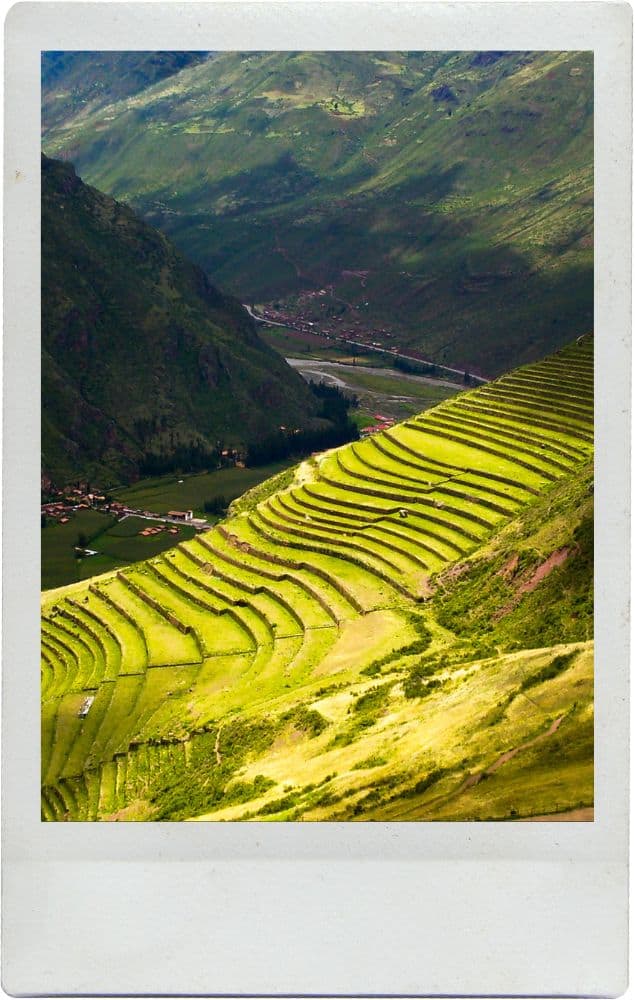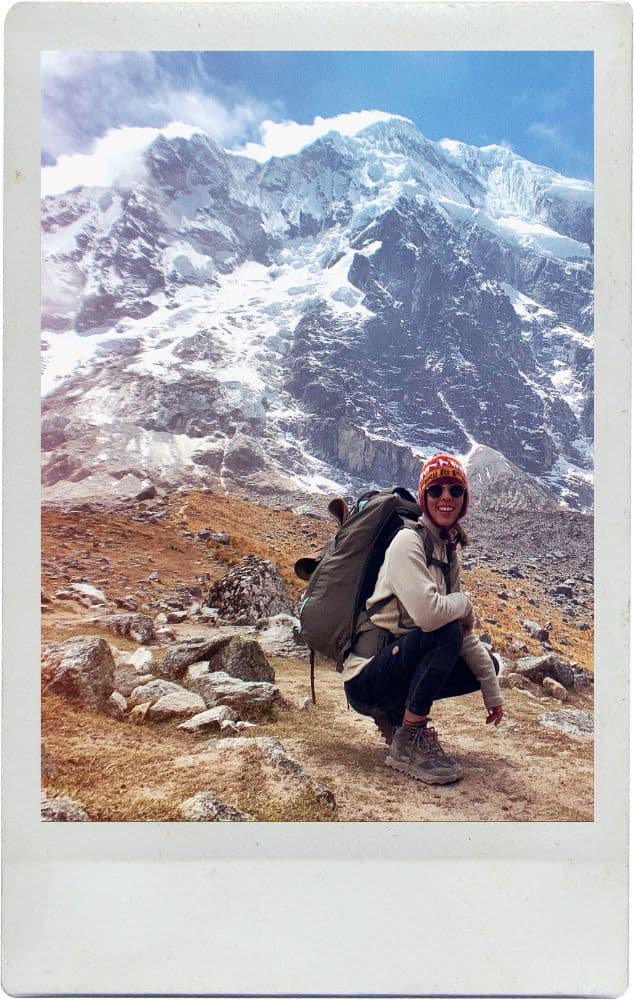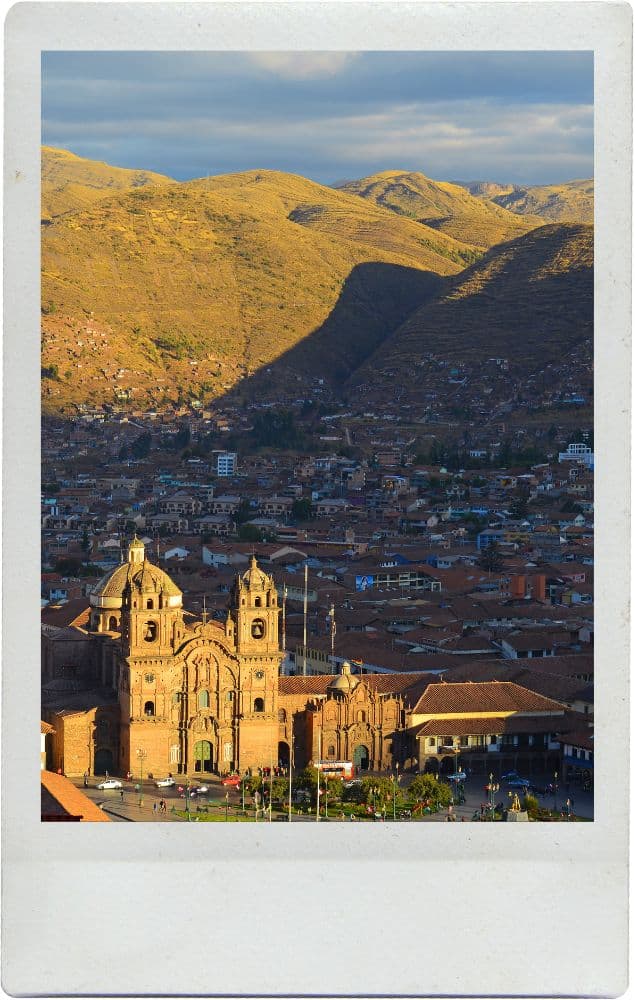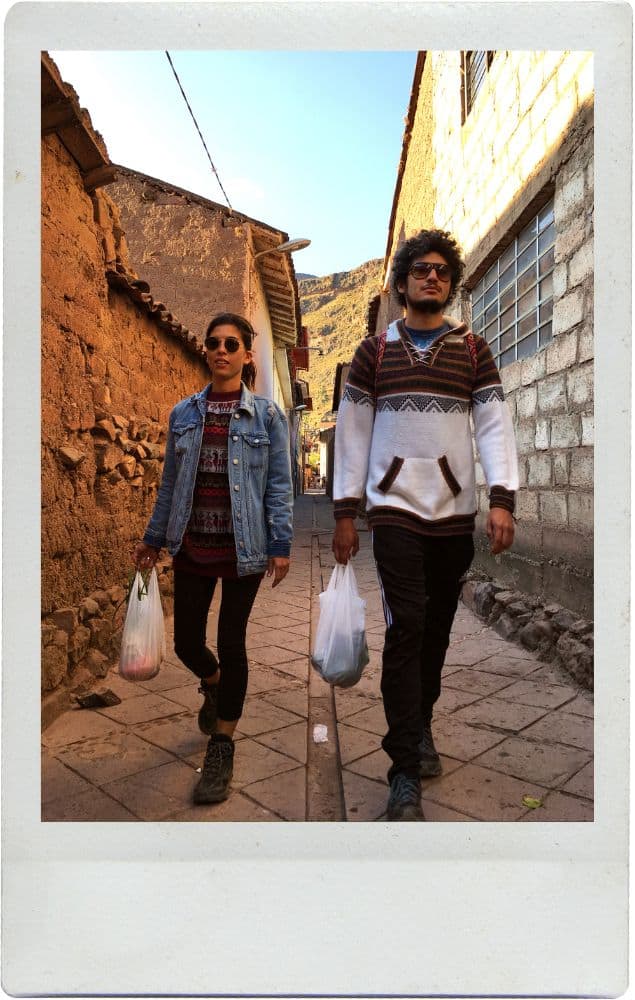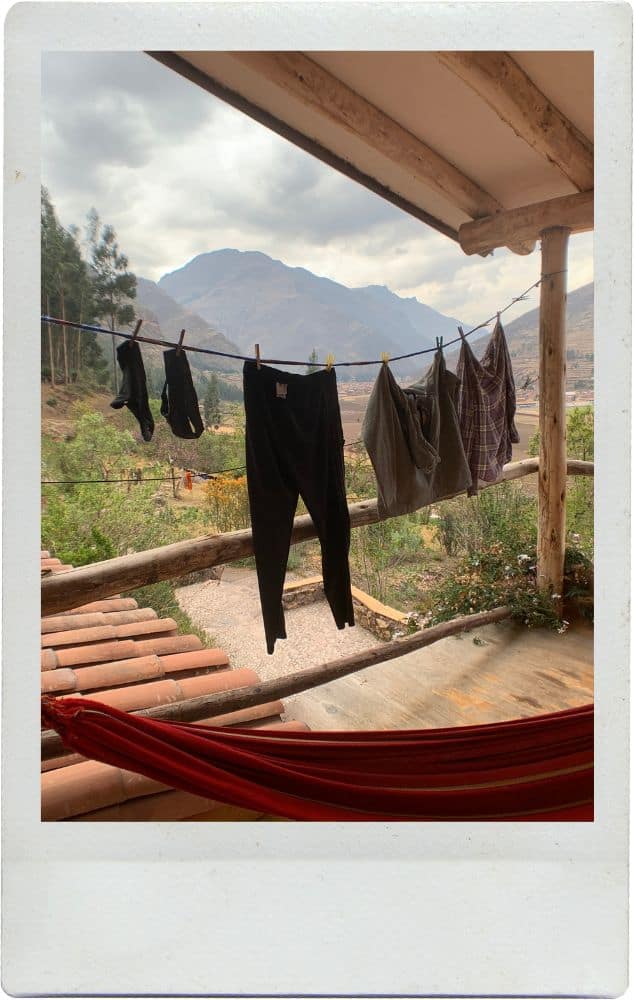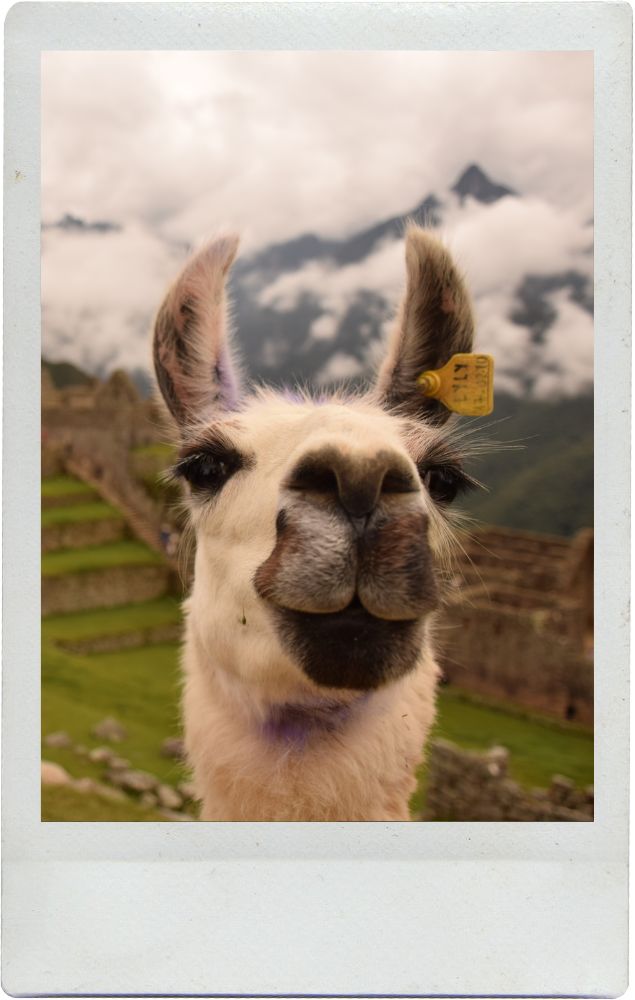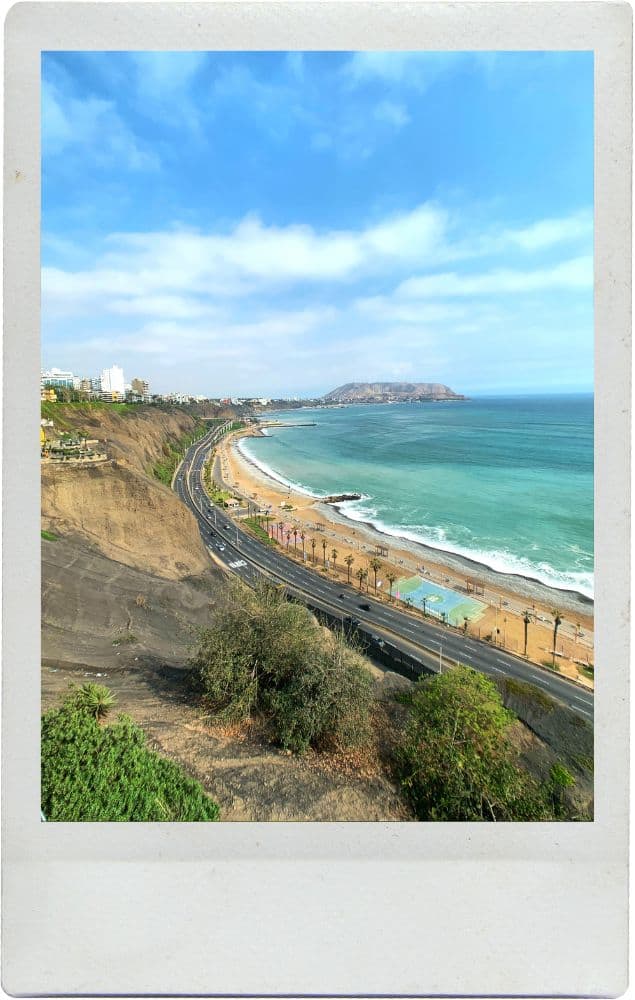8 Soulful Things to Do in the Sacred Valley, Peru
The Sacred Valley is a place I definitely want to return to. It holds a beautiful place in my heart—a place of rebirth, of learning to be kinder to myself, of starting to understand who I truly am.
I spent about a week in the valley, mostly in Urubamba, where I took part in a powerful ayahuasca and mescaline ceremony—an experience that changed me from the inside out. I also spent a few peaceful days in Pisac, wandering the markets and ruins. Afterward, I hiked the Salkantay Trail to Machu Picchu, carrying everything I had learned with me.
→ Ayahuasca & Mescaline: 5 Nights in the Heart of Peru
→ 5-Day Salkantay Trek to Machu Picchu
To get to the Sacred Valley, you’ll first need to arrive in Cusco. Though technically not part of the valley, Cusco is deeply connected to it—the gateway, the crown. Once the capital of the Inca Empire, Cusco sits at 11,000 ft and is where most travelers begin before descending into the valley’s gentler altitude.
→ 15 Amazing Things to Do in Cusco, Peru
There’s no one “right” way to explore the Sacred Valley. There’s so much to do—ancient ruins, vibrant markets, natural hot springs, healing ceremonies—but honestly, some of the most profound moments come from simply being still. Sitting with the mountains. Letting the wind guide you. Trust that you’ll find what you didn’t even know you were looking for.
Wander between towns, and you’ll stumble upon something sacred.
Below are 8 Soulful Things to Do in the Sacred Valley, Peru—some I’ve experienced myself, and some I’m holding space for on my next journey back.
1. Explore the Pisac Ruins & Market
Perched high above the Sacred Valley, the Pisac ruins are a breathtaking example of Inca engineering, astronomy, and spiritual design. Carved into the mountainside, the site features sweeping agricultural terraces, ceremonial spaces, and panoramic views that stir something ancient inside you. If you go early in the morning, you’ll likely have the place nearly to yourself—just you, the wind, and the sound of the valley breathing below.
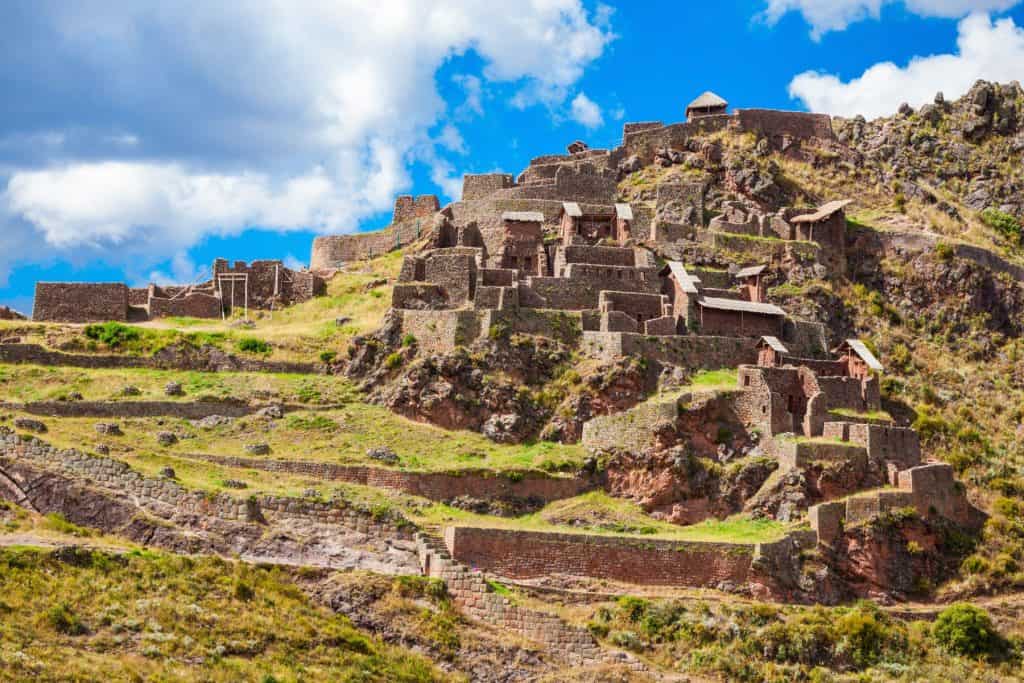
After your hike, make your way down into Pisac town, where the artisan market spills through cobblestone streets in a kaleidoscope of colors and textures. You’ll find handwoven textiles, crystals, ceramics, silver jewelry, and soulful conversation with the artists themselves. It’s one of the best places in the Sacred Valley to buy meaningful souvenirs and feel the pulse of daily life.
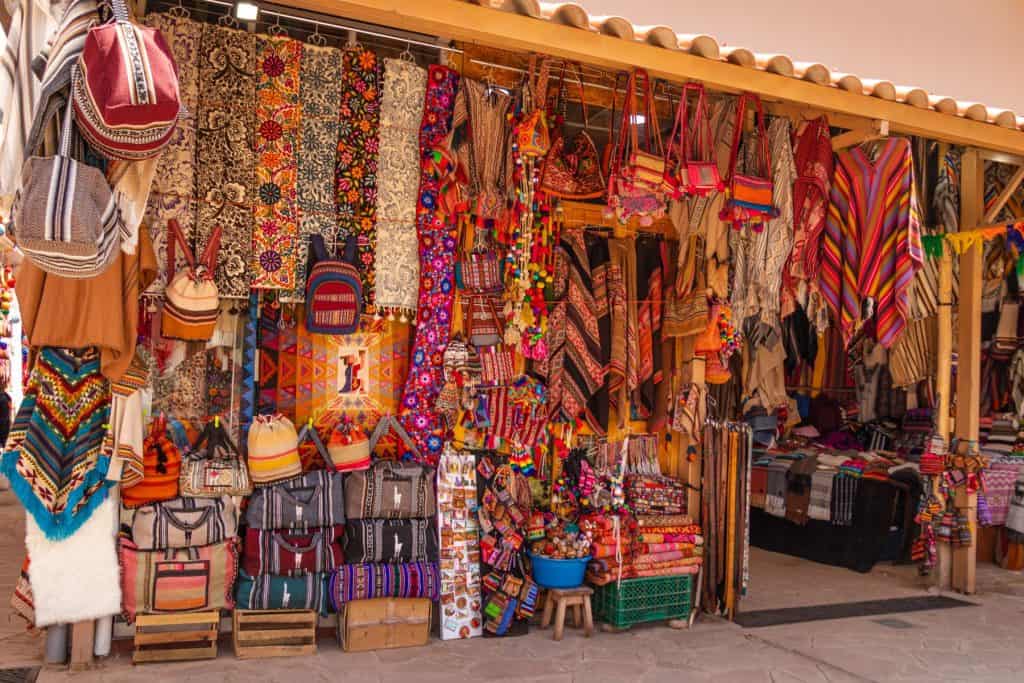
Pisac was one of the towns I visited in the Sacred Valley—and it holds a deep softness in my memory. I wrote more about my time there in this post:
→ 7 Things to Do in Pisac, Peru: The Gateway to the Sacred Valley
Whether you’re into ancient ruins, local markets, or simply soaking in the mystical atmosphere, Pisac is a must-stop on any Sacred Valley journey.
2. Climb Ollantaytambo Fortress
Ollantaytambo isn’t just a town—it’s a living Inca city, and climbing its fortress ruins feels like stepping into a myth still unfolding. Towering above the valley floor, the site was once both a military stronghold and a ceremonial center, built with massive, perfectly cut stones that defy explanation.
As you ascend the steep terraces, you’ll feel the strength of the ancient builders beneath your feet—and when you reach the top, the views are astounding: red rooftops below, snow-capped peaks beyond, and the winding river that feeds the Sacred Valley. From here, you can also see the face of Tunupa (the Andean god) carved into the cliffs, a reminder that this land was shaped by more than just human hands.
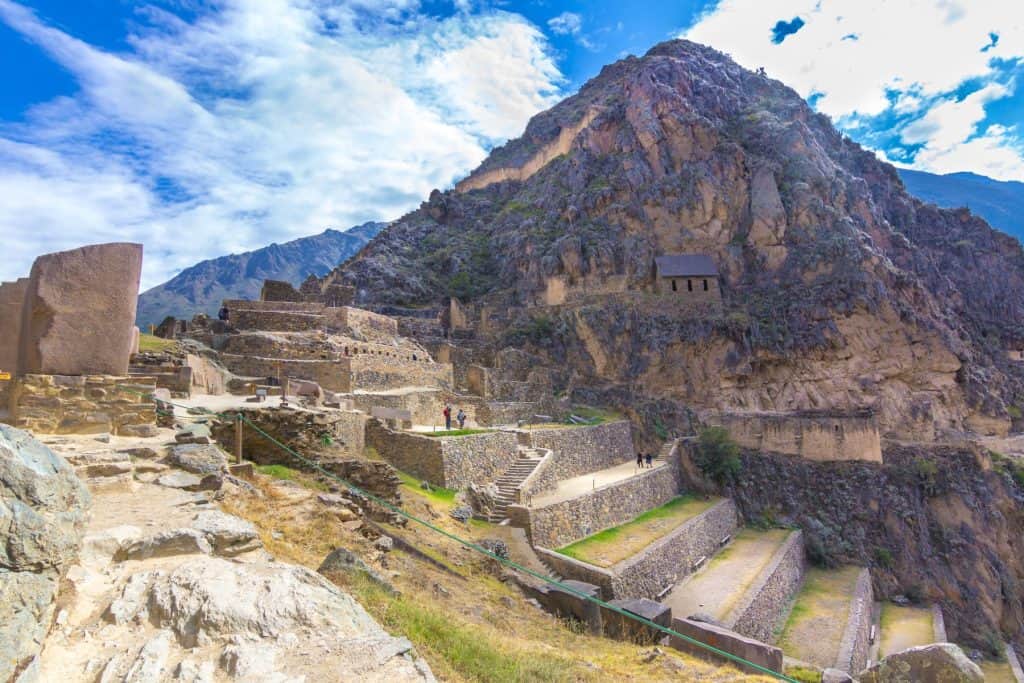
Ollantaytambo was one of the last places of resistance against the Spanish and remains one of the few towns that still preserves Incan urban planning—with original canals, cobbled alleys, and sacred sites still alive in the daily rhythms of the town.
It’s also the starting point for many treks and trains to Machu Picchu, but don’t rush through it. Climb slow. Breathe deep. Let the stones teach you something.
3. Visit the Maras Salt Flats
Tucked into the sun-bleached mountains above the Sacred Valley are the Maras Salt Flats (Salineras de Maras)—a dazzling network of thousands of geometric pools, terraced down the hillside like a glimmering, living tapestry.
These salt pans have been harvested by hand for over 500 years, and the tradition still continues today, passed down through generations of local families. Fed by a naturally salty spring that flows from deep within the earth, the pools reflect the changing light—sometimes gold, sometimes rose, sometimes bone-white under the midday sun.
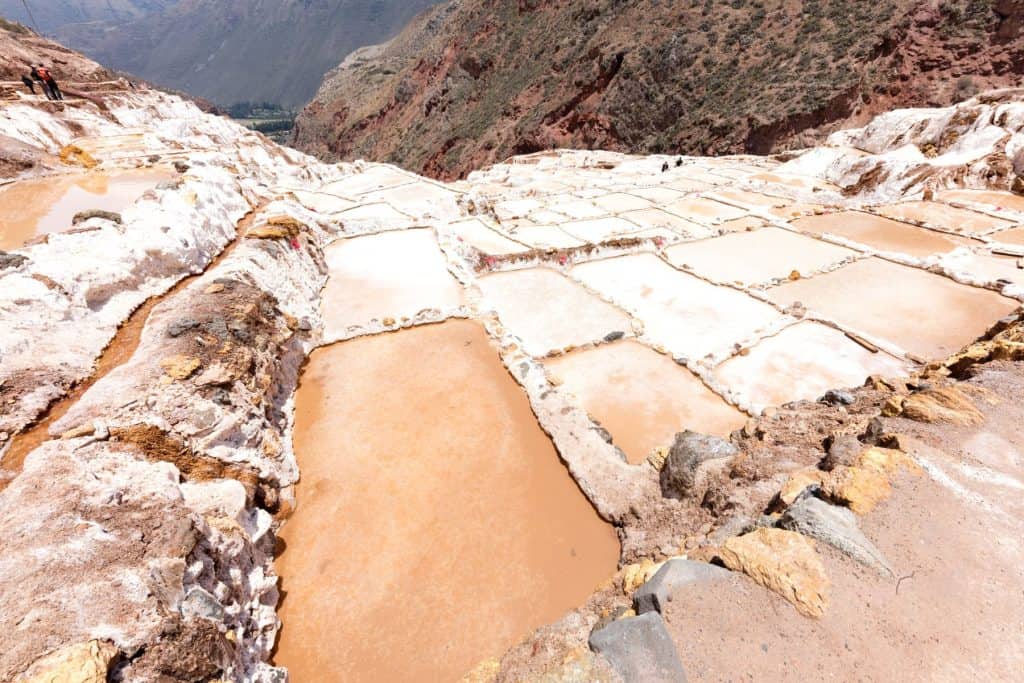
Walking along the narrow paths between the pools, there’s a hush in the air. It’s easy to forget you’re in the 21st century. You’ll witness how salt—the most ordinary mineral—becomes something sacred when it’s pulled from the land with care.
The site is easy to visit from Urubamba or Moray, and it’s especially stunning in the late afternoon light when the sun casts long shadows and the colors deepen.
Whether you’re interested in Incan engineering, ancestral traditions, or just want to stand in a place that feels both ancient and alive, Maras is unforgettable.
4. Stand in Awe at Moray
Just a short drive from the Maras salt flats lies one of the most intriguing and mysterious sites in the Sacred Valley of Peru: Moray.
From a distance, it looks like a crater. But as you approach, you begin to realize—this is no accident of nature. It’s a series of perfectly carved circular terraces descending into the earth, each layer forming its own microclimate. Historians believe the Incas used Moray as an agricultural laboratory, testing how crops would grow at different temperatures and altitudes.
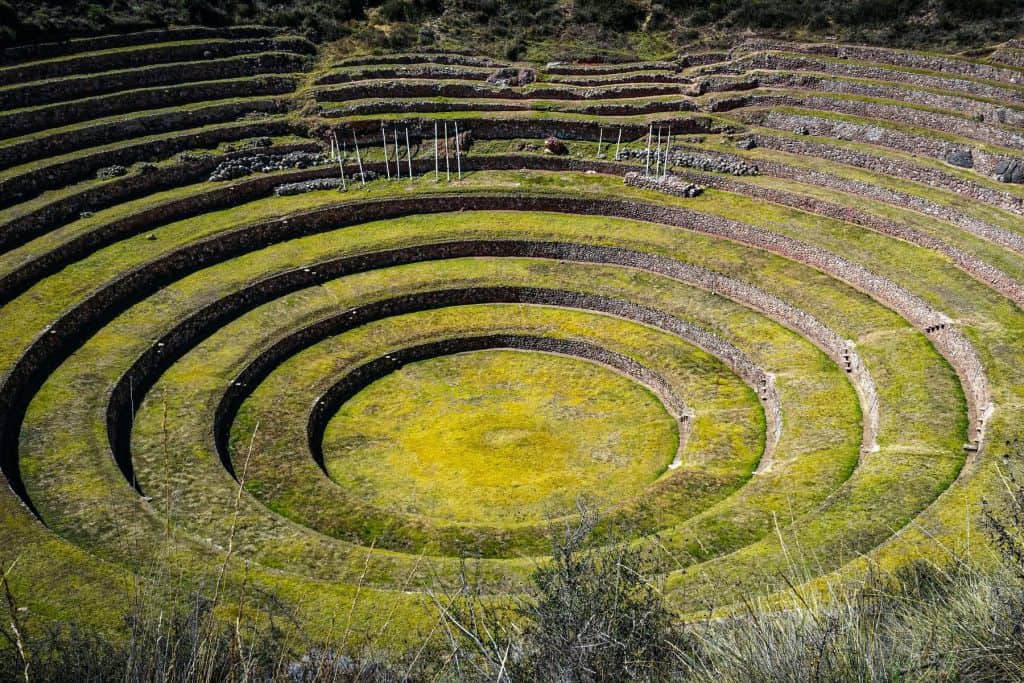
But standing at the edge, gazing down into the spirals, it’s hard not to feel something deeper. The shape pulls you inward. It feels ceremonial, cosmic—like a place built to commune with both the land and the sky.
Visiting Moray is an easy half-day trip from towns like Urubamba or Chinchero, often paired with a stop at Maras. Try to arrive early or late in the day, when the site is quiet and the light softens the stone.
Whether you’re drawn by Incan innovation, spiritual geometry, or simply want to feel something ancient stir beneath your feet, Moray is one of the most quietly powerful places in the Sacred Valley.
5. Ceremonial & Sacred Offerings in the Sacred Valley
The Sacred Valley of Peru isn’t just rich in history—it’s alive with ceremony. Here, you’ll find opportunities to participate in traditional Andean offerings, like despachos and fire ceremonies, or to sit with powerful plant medicines such as ayahuasca and San Pedro (Huachuma).
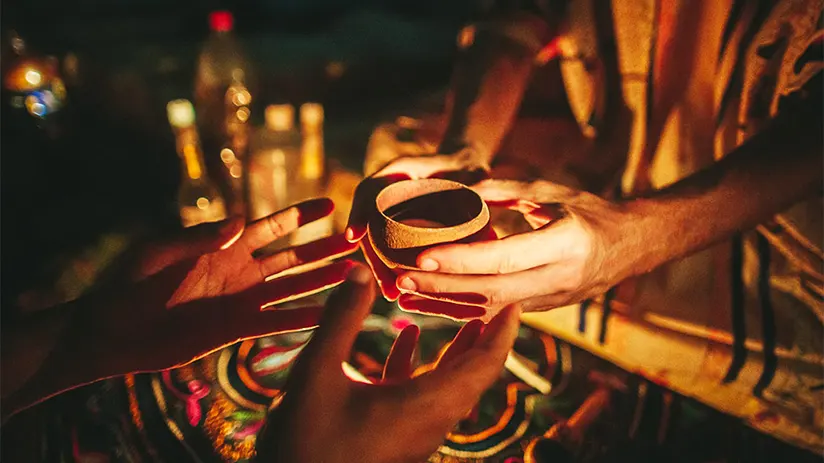
I spent several days in Urubamba in ceremony, and it was one of the most profound experiences of my life—a true turning point in how I see myself and the world.
→ Ayahuasca & Mescaline — 5 Nights in the Heart of Peru
Whether you come to heal, reflect, or simply listen, the Sacred Valley will meet you where you are.
6. Soak in some Hot Springs
After long hikes, ceremonies, or simply letting the energy of the Sacred Valley move through you, there’s nothing like sinking into warm, mineral-rich waters surrounded by mountains.
The most well-known are the Lares Hot Springs, tucked in a quiet Andean valley just beyond the main trail. With multiple pools of varying temperatures and stunning views all around, it’s the perfect place to rest, reflect, and integrate.
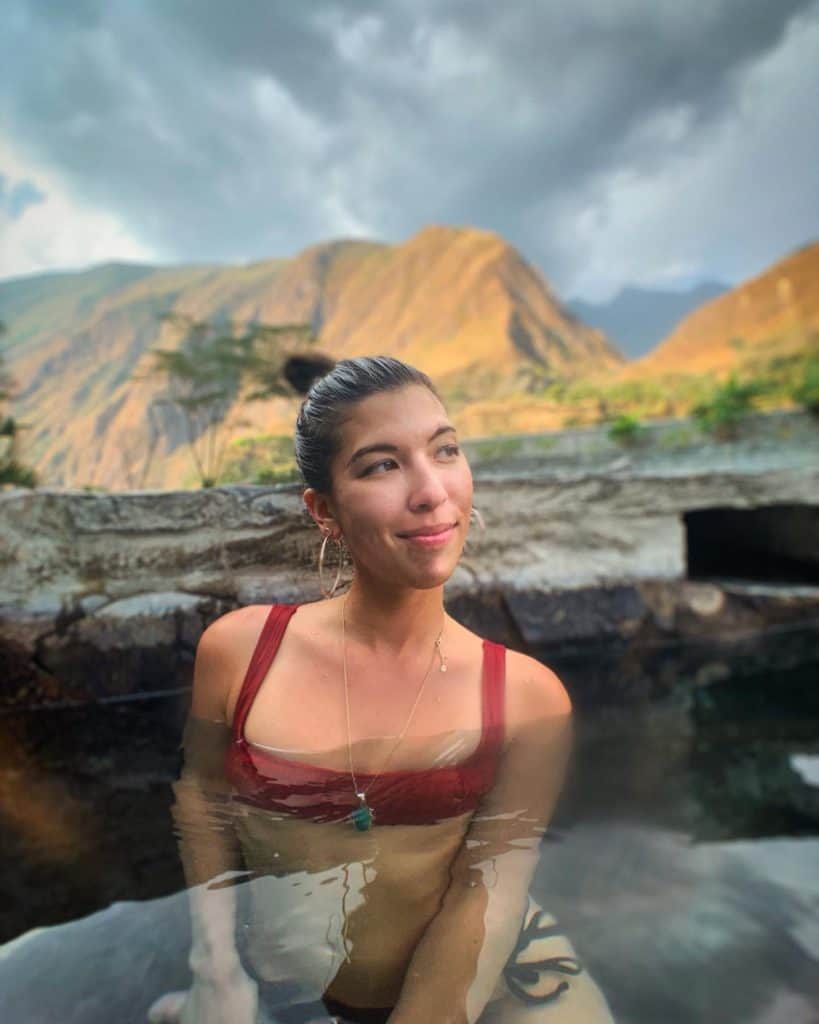
If you’re hiking the Salkantay Trail, the Cocalmayo Hot Springs near Santa Teresa are a jungle gem—crystal-clear and surrounded by lush green cliffs. While technically outside the core of the Sacred Valley Peru, many travelers include it in their journey as a natural extension of the experience.
There’s a sweetness in these waters. A kind of remembering. So go ahead—soak, soften, and let the valley hold you.
7. Visit a Quechua Weaving Community in Patacancha
High in the mountains above Ollantaytambo lies Patacancha, a small Quechua village where traditional weaving isn’t a lost art—it’s daily life. Here, women carry on ancestral techniques passed down for generations, spinning, dyeing, and weaving by hand, using natural fibers and plants gathered from the land.

A visit to Patacancha offers more than just watching a demonstration—it’s a cultural exchange. You’ll learn how colors are drawn from flowers, how patterns hold meaning, and how each textile carries both history and prayer. Supporting these communities directly helps preserve indigenous knowledge and livelihoods that too often go unseen.
If you’re exploring the Sacred Valley of Peru, take a day to make the journey to Patacancha. What you’ll bring back isn’t just a souvenir—it’s a deeper connection to the land and the people who have shaped it for centuries.
8. Visit Ñaupa Iglesia (Sacred Portal Cave)
Tucked into the cliffs near Pachar, just off the beaten path between Ollantaytambo and Urubamba, lies one of the Sacred Valley’s most mystical sites: Ñaupa Iglesia, often called the Sacred Portal.
This ancient Incan cave temple feels more like a threshold between worlds than a ruin. Inside, you’ll find precisely cut altars, mysterious carvings, and a silence that feels alive. The cave is said to be a place of deep energetic alignment, used by the Incas—and perhaps those before them—for ceremony, meditation, and cosmic connection.

It’s not an official tourist site, so there’s no entrance fee, no signage—just raw presence. To find it, you’ll need to hike a short but steep trail off the road, or go with someone who knows where to look.
If you’re seeking something off the radar, something that feels like a secret meant just for you, Ñaupa Iglesia is that kind of place. Still. Sacred. And waiting.
Final Thoughts: Let the Sacred Valley Guide You
The Sacred Valley of Peru is not a place to rush through. It’s a place that asks you to slow down, soften, and listen—to the wind, the water, the silence between the stones.
You might come for the ruins or the views, but you’ll leave with something quieter: a shift, a knowing, a memory that lives in the body more than the mind.
Whether you’re climbing ancient fortresses, soaking in hot springs, sitting in ceremony, or simply wandering between villages with no plan at all, the Sacred Valley has a way of giving you exactly what you need—even if you didn’t know you were looking for it.
Go with an open heart. Let the mountains speak. Let the valley guide you.
And if you feel it calling you back… listen. I know I will.


